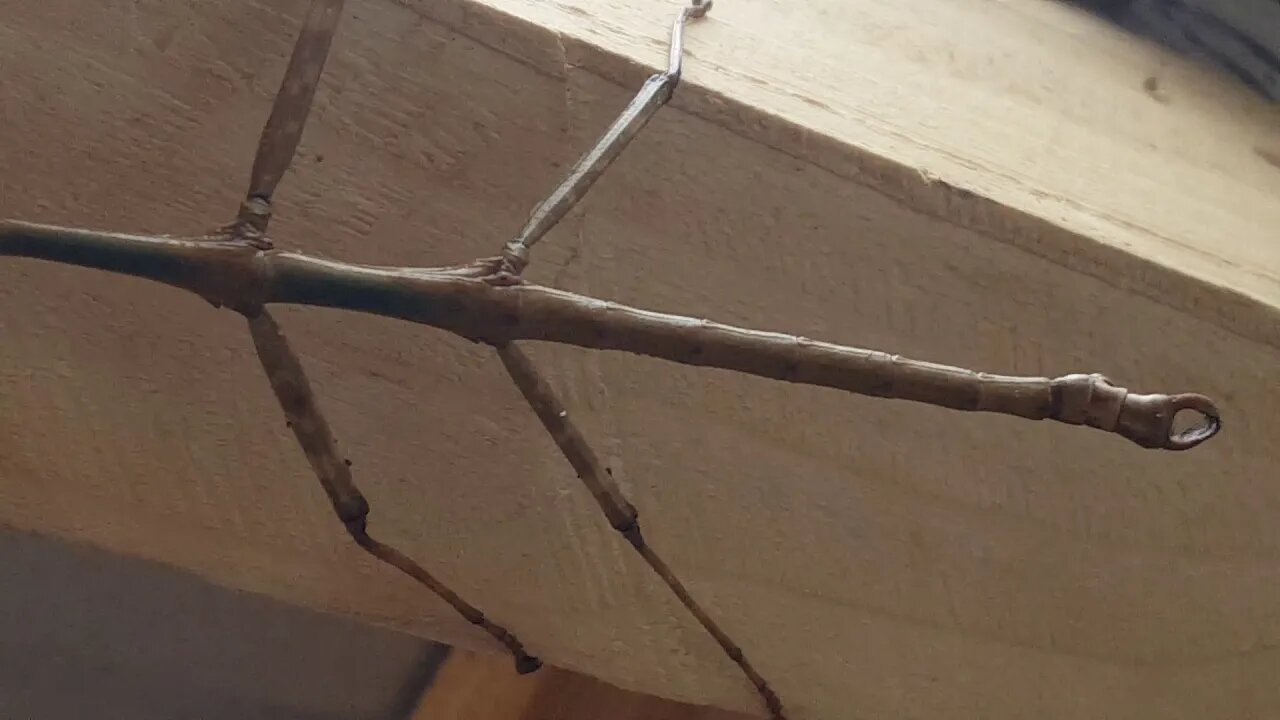Premium Only Content

Texas Giant Walking Stick - (Megaphasma dentricus) - Longest Insect in The U.S.A
Texas Giant Walking Stick (Megaphasma dentricus)
I think this is could be record breaker.
Description: Walkingsticks are slow moving, wingless, and stick-like, with long, slender legs and long thread-like antennae. Their color, form and behavior allow them to hide from predators. They vary in color from green to brown and may grow to be almost 4 inches long (Diapheromera femorata (Say)) although one Texas species grows to almost 7 inches long (Megaphasma dentricus (Stål)), the longest insect in the United States!
No other species can be confused with walkingsticks. They do not have front legs modified for capturing prey as do praying mantids and the thread-legged bug (Heteroptera: Reduviidae).
Life Cycle: In the fall, black or brown seed-like eggs are dropped by females to the litter below host plants. Nymphs hatch in the spring and develop through several stages (instars) before becoming sexually mature adults. One generation is produced each year. Walkingsticks occasional defoliate some trees and shrubs.
Habitat, Food Source(s), Damage: Nymphs and adults have chewing mouth parts and feed on leaves. In the spring, young nymphs feed mainly on understory shrubs. Later instar nymphs and adults feed throughout the crown of host plants. Host plants include apple, basswood, birch, dogwood, hackberry, hickory, locust, oak, pecan and wild cherry. Outbreaks are cyclic.
-
 20:58
20:58
GritsGG
1 day agoProtect the President Challenge on Warzone!
7.46K -
 1:49:07
1:49:07
The Michelle Moore Show
2 days ago'Biden's Immigration Mess, President's Trump Spiritual Cry For Help, English Speaking Truckers Only, Woke CEO's Killing of Conservative Brands, Palantir's Kill Chain' Mark Taylor: The Michelle Moore Show (Aug 25, 2025)
29.9K91 -
 LIVE
LIVE
Lofi Girl
2 years agoSynthwave Radio 🌌 - beats to chill/game to
181 watching -
 2:14:18
2:14:18
The Pascal Show
12 hours ago $0.40 earnedTHEY LIED TO POLICE AGAIN? Jake & Rebecca Haro Have Lost Their Minds! Emmanuel Haro Search Continues
4.66K -
 1:25:52
1:25:52
TruthStream with Joe and Scott
2 days agoSG Sits Down w/ LT From "And We Know": An 80K FT View of Humanity's Great Awakening from 8/22/2025
15.8K16 -
 15:54
15:54
Lacey Mae ASMR
11 hours ago $0.68 earnedASMR For Sleep in 15 Minutes!
9.13K4 -
 3:16:38
3:16:38
Price of Reason
11 hours agoTrump FIRES Fed Governor Lisa Cook! Cracker Barrel CRISIS Continues! James Gunn DCU Woes! Gamescon!
111K7 -
 2:25:01
2:25:01
FreshandFit
6 hours agoTyreek Hill Pays Ex Wife $1 Million in Ongoing Fees From Divorce?!
34K3 -
 2:03:46
2:03:46
Inverted World Live
8 hours agoHaunted Dolls Hack Amazon Alexa | Ep. 98
106K2 -
 3:09:53
3:09:53
Laura Loomer
8 hours agoEP140: Loomer EXPOSES Islamification At US State Department
35.7K12